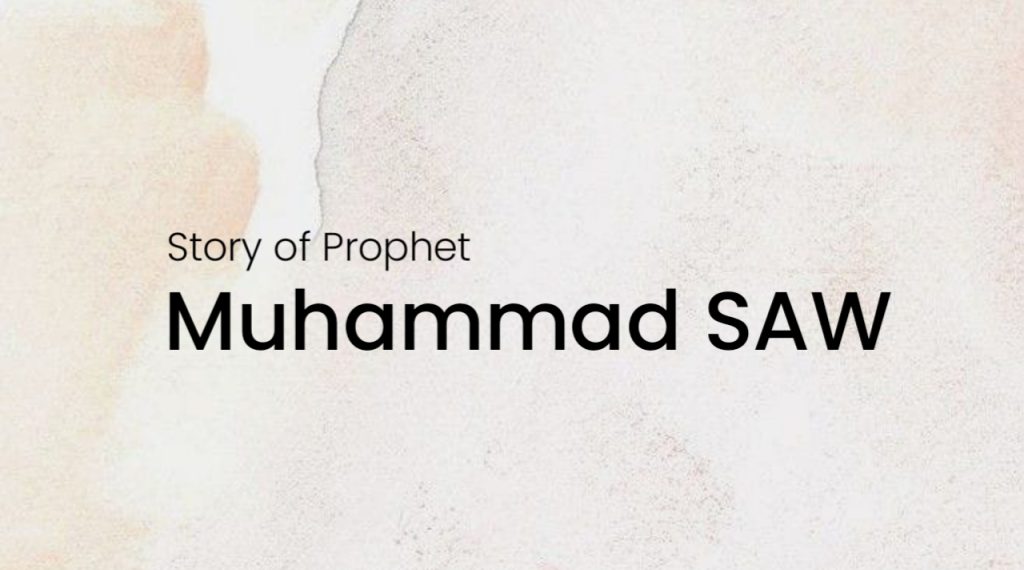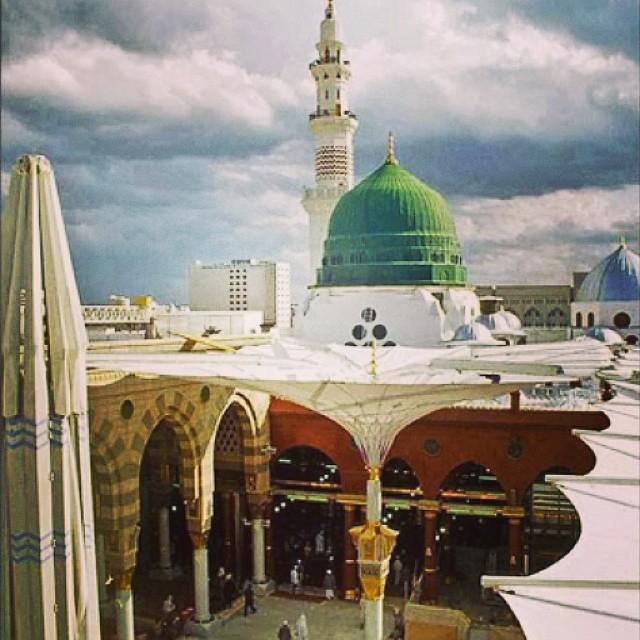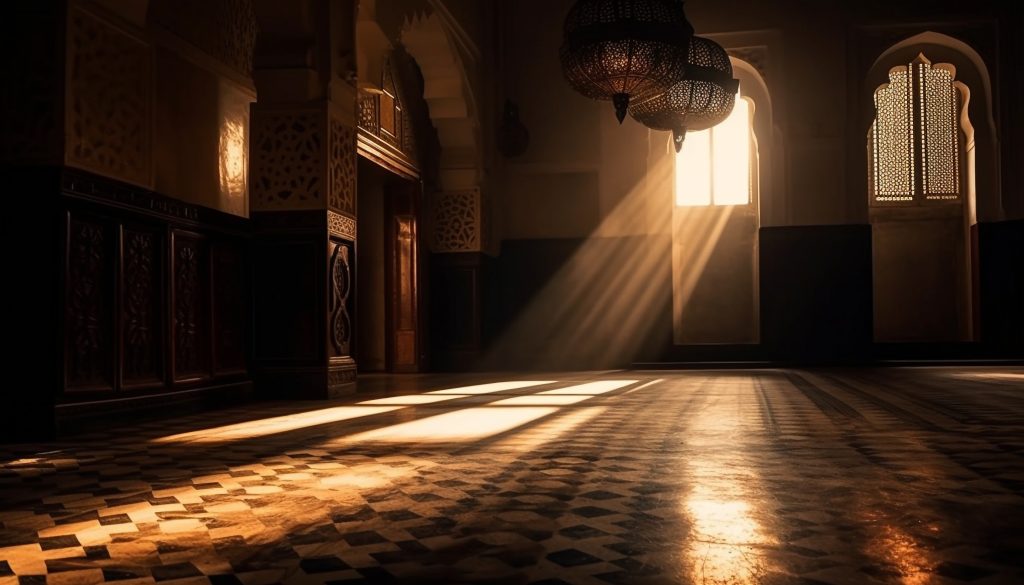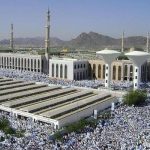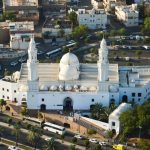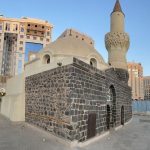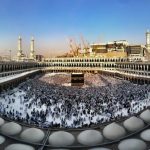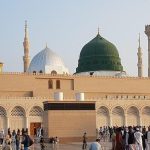Welcome to the Umrah International blog, where we explore the rich history and profound teachings of Islam, beginning with a captivating look at the life of Prophet Muhammad (peace be upon him). As a travel agency, we believe that understanding the spiritual significance of your journey is essential, especially when embarking on the sacred pilgrimage of Umrah.
A Glimpse into His Ancestry
Muhammad, the son of Abdullah, hailed from the noble Quraysh tribe, tracing his lineage back to Ismael, the son of Prophet Abraham (peace be upon them). Born in Mecca on a Friday, the 17th of Rabi-I in 570 CE, his noble lineage positioned him among the esteemed leaders of his community. His prophetic mission commenced in 610 CE when he received the first revelation, marking the beginning of a transformative journey that would span 23 years.
His Formative Years
Orphaned at a young age, Muhammad was raised first by his grandfather, Abdul-Muttalib, and later by his uncle, Abu Talib. His grandfather, a chieftain of the Quraysh, instilled in him values of kindness and justice. Muhammad’s mother, Aminah, shared a miraculous moment at his birth, proclaiming his extraordinary destiny. These early years shaped the character of a man known for his integrity and compassion.
An Exemplary Young Man
As a young man, Muhammad earned the titles of Al-Sadiq (the Truthful) and Al-Amin (the Trustworthy) due to his exceptional character and honesty in trade. His early experiences in business not only honed his skills but also set the stage for his future leadership. His journey to Syria with his uncle revealed his potential to a Christian monk, who recognized him as a divinely appointed leader.
The Blossoming of His Mission
In 610 CE, at the age of forty, Muhammad received his first revelation in the Cave of Hira. This moment transformed his life and the lives of many. His wife, Khadijah, became his first follower, supporting him unconditionally. Together, they faced the challenges of spreading the message of Islam, starting with close family and friends.
The Growing Community
Initially, the message spread quietly, with a handful of followers. However, as the teachings gained traction, they faced increasing opposition from the Quraysh tribe. The Prophet’s unwavering commitment to his mission led to escalating tensions, as his community endured persecution. Yet, the strength of faith held them together, with Khadijah and Abu Talib standing firm in their support.
Trials and Tribulations
The Quraysh escalated their efforts to quash the growing Muslim community, imposing social and economic boycotts. Despite the hardships, the resolve of the Muslims remained unbroken. The bond of community was fortified as they sought refuge with one another, exemplifying the strength of unity in faith.
A Message of Hope and Resilience
Through these trials, the Prophet’s character shone brightly. He preached mercy, compassion, and perseverance, offering hope to those who suffered. His dedication inspired loyalty among his followers, further solidifying their commitment to the message of Islam.
The End of One Affliction and the Onset of Others
In the tenth year of the noble prophethood, around 620 CE, the Hashim clan finally felt secure enough to leave their secluded quarters and engage with the broader community. However, this newfound freedom was soon overshadowed by tragedy.
Less than six months after this period of respite, Abu Talib passed away, followed shortly by the death of Lady Khadijah, the Prophet’s wife, who is said to have died merely three days later. The Prophet Muhammad was deeply affected by these losses and designated this year as the “Year of Sorrow.”
The deaths of Abu Talib and Lady Khadijah struck a profound blow to the Prophet at a time when he needed their support most. Abu Talib’s presence had served as a protective barrier against the Quraysh’s hostility; without him, the Quraysh felt emboldened to unleash their aggression. The nature of their persecution became increasingly brutal and unrestrained. An instance of this occurred when one of the idolaters attempted to strangle the Prophet while he was praying at the Ka’bah. Additionally, they incited individuals to throw dirt and filth at him, and Ummayah ibn Khalaf harassed him relentlessly. Despite this, the Prophet remained patient, even when dirt was thrown in his face, returning home with it still on him. His daughter Fatimah wept as she cleaned him, to which he reassured her, saying, “Do not cry, my daughter, for Allah will protect your father.”
Khabab reported an encounter with the Prophet during which he urged him to invoke divine intervention amidst the harm inflicted by the polytheists. The Prophet responded with a poignant reminder of the trials faced by previous prophets, emphasizing that their steadfastness in faith would lead to a future where safety would prevail.
The Migration of the Messenger of Allah
As the Quraysh conspired to eliminate Muhammad physically, they devised a plan that involved forty clans to share the burden of guilt. Each clan selected their best warrior to strike at the Prophet, ensuring that any retribution from Bani Hashim would be complicated by the involvement of multiple tribes.
Divinely guided, the Prophet was instructed to migrate to Yathrib, later known as Medina. In 622 CE, after thirteen years of preaching in Mecca, he departed for Medina, leaving Ali ibn Abu Talib behind to manage various responsibilities and act as a decoy in his bed. This clever ruse allowed the Prophet to evade his assailants.
On his journey, the Prophet encountered Abu Bakr, who joined him in this critical mission. As dawn broke, the forty warriors pursued him, using an expert guide. However, they failed to locate the Prophet and his companion, who were hidden in the cave of Thawr, cleverly concealed by a spider’s web and a pigeon’s nest at the entrance.
When the Quraysh learned of the Prophet’s escape, they placed a bounty of one hundred camels on his capture. Muhammad left Mecca on the eve of Rabi-I and arrived at the outskirts of Medina, approximately 400 kilometers away, on the 12th of the same month.
Ali’s responsibilities included returning valuables entrusted to the Prophet for safekeeping, even those belonging to his adversaries, reflecting the Prophet’s unparalleled trustworthiness. After fulfilling his duties, Ali joined the Prophet in Medina, accompanied by Fatimah bint Asad, Fatimah the daughter of the Prophet, and Fatimah daughter of Zubair.
The Arrival of the Messenger of Allah in Medina
Upon learning of the Prophet’s arrival, the Muslims of Medina eagerly awaited him each day until a Jewish man spotted him and announced his arrival. The community joyfully greeted the Prophet at Quba, where he stayed for three days, establishing the first mosque in Islam.
On Friday, the Prophet delivered his inaugural sermon in Quba, leading the first Friday prayers. Afterward, he journeyed to Medina, where he allowed his she-camel to choose the location of his residence, which turned out to be the home of Abu Ayyub, one of the city’s less affluent citizens. Notably, upon entering, Abu Ayyub’s blind mother regained her sight as the Prophet prayed for her.
The day of the Prophet’s entry into Medina is remembered as a moment of immense joy. One observer reflected that it was the brightest day he had ever seen, contrasting sharply with the darkness felt on the day of the Prophet’s passing.
The Formation of the First Muslim Community
As a significant number of Muslims migrated from Mecca, alongside the welcoming locals, the first cohesive Muslim community began to take shape under the Prophet’s leadership. He fostered unity among various rival factions, promoting peace and cooperation in a city once marred by conflict.
Despite the relative safety of Medina, the Quraysh continued to threaten the Muslims, leading to several unequal battles, such as the Battle of Badr, where Muslim forces were vastly outnumbered. Ultimately, peace was achieved through the Treaty of Hudaybiyah, signed in the sixth year after Hijrah, which, although seemingly unfavorable to Muslims at the time, later proved to be advantageous.
The Liberation of Mecca
Less than two years after this treaty, the Quraysh broke the peace, prompting the Prophet to mobilize ten thousand troops for a decisive campaign. As he advanced toward Mecca, he instructed his companions to light numerous fires to conceal their approach. Abu Sufyan, realizing the gravity of the situation, sought amnesty from the Prophet.
When the Prophet entered Mecca, he refrained from occupying his old home, instead pitching a tent near his uncle Abu Talib’s grave. Following a brief rest, he made his way to the Ka’bah, where he symbolically destroyed the idols, proclaiming the triumph of truth over falsehood.
The Prophet’s entry into Mecca marked the end of idol worship in the city and was accomplished with minimal conflict. Although he managed Mecca’s affairs for only fifteen days, he appointed a young governor, Etab ibn Osayd, before returning to Medina.
Ideal Islamic Order
From its inception, the Prophet Muhammad gradually built a comprehensive Islamic system of governance and a way of life. In the early years, the emerging Muslim community in Medina faced significant challenges, including numerous attacks from the Quraysh and their allies. During this critical period, the Prophet seized every opportunity to educate the Muslims on proper conduct in both war and peace. He addressed personal ethics, social norms, political governance, and fiscal policies, laying the foundation for an ideal Islamic order.
Political Principles
On the political front, the Prophet emphasized the necessity of avoiding war and violence whenever possible. He taught that conflict should only be considered a last resort, undertaken only when all other options have been exhausted. This commitment to peace was evident during the Prophet’s ten years in Medina; despite being drawn into numerous battles, records indicate that around 800 men lost their lives on both sides. This statistic underscores the Prophet’s dedication to minimizing bloodshed and promoting a culture of restraint.
The Prophet instilled specific guidelines for his military commanders, forbidding them from destroying homes, pillaging, or cutting down fruit-bearing trees. He consistently reminded his generals to refrain from drawing their swords unless absolutely necessary, and he did not hesitate to admonish them for any missteps in conduct. This approach highlighted his commitment to ethical warfare and the protection of civilian life.
Social and Economic Policies
One of the Prophet’s key social principles was encapsulated in the phrase: “Land belongs to Allah and whoever develops it.” This principle had profound implications for the socio-political landscape, encouraging development and cultivation while fostering a sense of communal responsibility.
Additionally, the Prophet established policies aimed at safeguarding the welfare of the community. He declared, “I am responsible for them,” emphasizing his duty to care for families left without support after the death of their breadwinners. He made it clear that any wealth left behind belonged to the heirs, thereby abolishing the concept of inheritance tax in Islam. Moreover, he took responsibility for repaying debts incurred by deceased individuals, ensuring that their families were not left in financial distress.
The Prophet also emphasized the rights and protections of non-Muslims living under Islamic governance, known as dhimmis. He stated, “He who hurts a dhimmi has indeed hurt me,” underscoring the responsibility of the Islamic state to safeguard the rights of all its citizens. These laws, along with the peaceful liberation of Mecca, encouraged many to embrace Islam, leading to significant growth in the Muslim community. The divine revelation during this time highlighted the influx of people into Islam:
By the name of Allah, the Compassionate, the Merciful
When Allah’s succor and the conquest arrived,
And you saw the people entering into the religion of Allah in troops,
So glorify the praise of your Lord and seek His forgiveness; indeed, He is relenting.
The Two Momentous Things
During his time in Medina, the Prophet addressed two critical issues that would serve as a guiding framework for Muslims after his departure: the compilation of the Holy Qur’an and the appointment of his successors.
The Holy Qur’an
The Prophet recognized the importance of compiling the Qur’an into a bound format, known as the mus-haf. He appointed Ali ibn Abi Talib to undertake this monumental task during the Prophet’s lifetime, ensuring it was completed under his supervision. The Prophet meticulously validated this compilation, confirming not only the text but also the arrangement of verses as dictated by divine instruction.
Tradition holds that during the Prophet’s life, the complete text of the Qur’an was available in written form, allowing individuals to visit his mosque to make copies. While some mistakenly believe that the Qur’an was first compiled during the reign of Uthman ibn Affan, two decades after the Prophet’s death, this misunderstanding stems from an incorrect interpretation of the Arabic term “jame,” which means “to collect” rather than “to compile.” The compilation during Uthman’s reign aimed to gather incomplete documents and standardize the mus-haf, reproducing the version originally compiled by Imam Ali.
The Ahl al-Bayt
Another pivotal responsibility of the Prophet was establishing his successors, as instructed by the Almighty. Muhammad named twelve successors, or Imams, starting with Imam Ali and concluding with the hidden Imam Mahdi, who will emerge when divinely commanded to lead humanity away from tyranny toward peace.
At Ghadir Khum, shortly before his death in 630 CE, the Prophet publicly declared Ali as his successor, urging the assembled Muslims to pledge their allegiance to him. The divine revelation during this momentous event emphasized the significance of this appointment:
O Messenger! Convey what has been revealed to you from your Lord; and if you do not, then you have not conveyed His message. Allah will protect you from the people. Surely, Allah does not guide the disbelieving people.
The Prophet stated, “For whoever I am his master, then Ali is his master too.” Estimates suggest that approximately 120,000 individuals affirmed their allegiance to Ali at Ghadir Khum, marking a pivotal moment in Islamic history.
To seal this event, the Almighty revealed:
Today I have perfected your religion for you, completed My favor upon you, and sanctioned Islam for you as a religion.
Throughout his life, the Prophet emphasized the importance of the Ahl al-Bayt, particularly Ali, as the most knowledgeable guardians of the Qur’an and his teachings. He famously stated, “I am the City of Knowledge, and Ali is its Gate; whoever wishes to access this City must do so through its Gate.”
The Qur’an and the Ahl al-Bayt are regarded as complementary components of the divine message. In his final days, the Prophet reiterated, “I leave with you the two momentous things—the Book of Allah and my kin, the Ahl al-Bayt. As long as you adhere to both, you will never go astray after me.”
Legacy and Challenges
Sadly, after the Prophet’s death, many did not honor their pledge to support his appointed successor. Following numerous attempts on his life, the Prophet Muhammad was ultimately assassinated through poisoning, passing away on the 28th of Safar in 630 CE.
The Prophet Muhammad created a vibrant nation and civilization that swiftly rose to prominence. However, despite the vast number of Muslims today, many do not hold significant positions on the global stage, largely due to a failure to adhere to the “two momentous things” he bequeathed. Nevertheless, the Muslim nation still holds the potential to lead humanity toward peace and prosperity, provided they return to the teachings of the Prophet Muhammad and his successors.
The Elevated Virtues of Prophet Muhammad
Exemplary Moral Conduct
Prophet Muhammad, the final Messenger of God, embodied the highest moral standards in every aspect of life. When Imam Ali, son of Abu Talib (peace be upon them), was asked to describe the Prophet’s character, he remarked, “How can I articulate the Prophet’s morals when God Himself attests to their sublimity in the verse: ‘And most surely you have sublime morals’ (Qur’an 67:4)?” His wife further elaborated that the Prophet’s character was a true embodiment of the Qur’an.
Before assuming his prophetic role, the Prophet was divinely prepared to become a paragon of virtue. Imam Ali, who had an intimate understanding of the Prophet, noted, “From the moment he was weaned, God surrounded him day and night with His most exalted angels to guide him towards the path of virtue and exemplary morals.”
Engagement with Society
Husayn, son of Imam Ali, recounts that when asked how the Prophet spent his time at home, his father explained: “He divided his time into three segments: one for God, one for his family, and one for himself. The portion allocated for himself was further divided among those in need, both close to him and in the wider community.” The Prophet prioritized virtuous individuals and ensured that he addressed their needs, often encouraging others to relay information about those who were absent.
When in public, the Prophet maintained discretion and actively sought to unite the people. He honored the dignitaries of various communities and consistently advocated against discord. His approachable demeanor fostered warmth, and he remained attuned to community concerns, always prioritizing truth and encouraging goodness while discouraging immorality.
Humility in Action
The Prophet’s profound humility was evident in his everyday actions; he often engaged in simple tasks such as sitting on the ground and sharing meals with servants. He accepted invitations from individuals across all social standings, emphasizing that humility should be upheld in all actions. He once declared that he would not cease to participate in practices such as eating on the floor or milking goats, ensuring these traditions would inspire others.
Ibn Abbas noted that the Prophet took the humblest position in gatherings, exemplifying his disdain for arrogance. His wife described him as one who sewed his own garments and attended to household duties like any ordinary man.
A Beacon of Affection and Respect
The deep affection his companions held for the Prophet was palpable; they often lowered their heads in his presence and competed for his blessings. Orwah ibn Masud al-Thaqafi remarked that the reverence displayed by the companions surpassed that of any royal court he had witnessed. Anas ibn Malik emphasized that the Prophet never reprimanded or scolded his companions, showcasing unparalleled patience and understanding.
His interactions were characterized by an absence of judgment, as he refrained from seeking out others’ faults or engaging in disputes. Instead, he focused on kindness and support, fostering an environment where everyone felt valued and respected.
The Essence of Forgiveness and Compassion
Anas recounted an incident where a Bedouin man rudely demanded wealth from the Prophet. Rather than respond with anger, the Prophet smiled and generously ordered a gift for him. He frequently emphasized that he had been sent as a mercy, not as a means to curse or condemn others. His teachings included maintaining sincerity, forgiving those who wronged him, and seeking to bridge divides among people.
The Prophet’s responses to hostility were rooted in compassion. After being mistreated by the tribe of Thuqayf, he prayed for their guidance instead of seeking revenge, embodying a commitment to mercy and reconciliation.
Timeless Inspiration
In essence, the character of Prophet Muhammad serves as a timeless exemplar of sublime qualities, showcasing humility, compassion, and an unwavering dedication to moral integrity. His life remains an enduring inspiration for those who aspire to embody these virtues in their own lives.
Conclusion: A Legacy of Peace
Prophet Muhammad’s life is a testament to the power of faith and the importance of compassion. His teachings continue to resonate today, guiding millions toward a path of peace and understanding. At Umrah International, we encourage you to reflect on these teachings as you embark on your spiritual journey.
Explore the profound significance of Umrah and connect with the rich history of Islam. Join us as we honor the legacy of the Prophet Muhammad (peace be upon him) and strive to embody the values he imparted.
Thank you for visiting the Umrah International blog. Stay tuned for more insightful articles that enrich your travel experiences and deepen your understanding of this beautiful faith.

